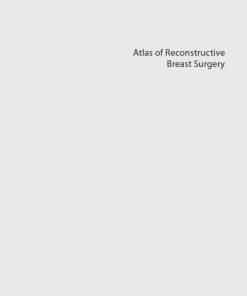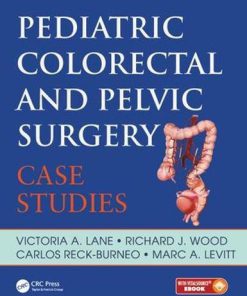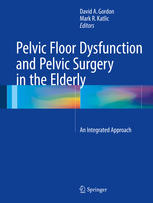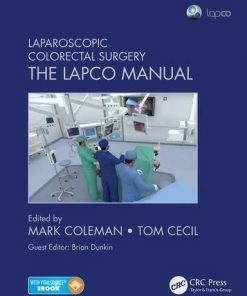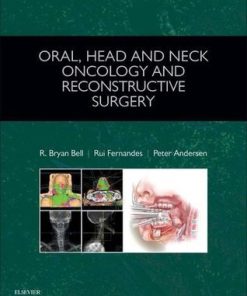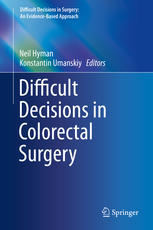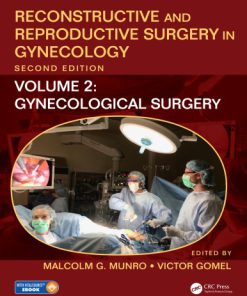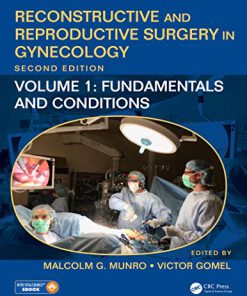Pediatric Colorectal and Pelvic Reconstructive Surgery 1st Edition by Alejandra Vilanova Sanchez, Marc Levitt 0429639906 9780429639906
$50.00 Original price was: $50.00.$25.00Current price is: $25.00.
Pediatric Colorectal and Pelvic Reconstructive Surgery 1st Edition by Alejandra Vilanova-Sanchez, Marc A. Levitt – Ebook PDF Instant Download/DeliveryISBN: 0429639906, 9780429639906
Full download Pediatric Colorectal and Pelvic Reconstructive Surgery 1st Edition after payment.
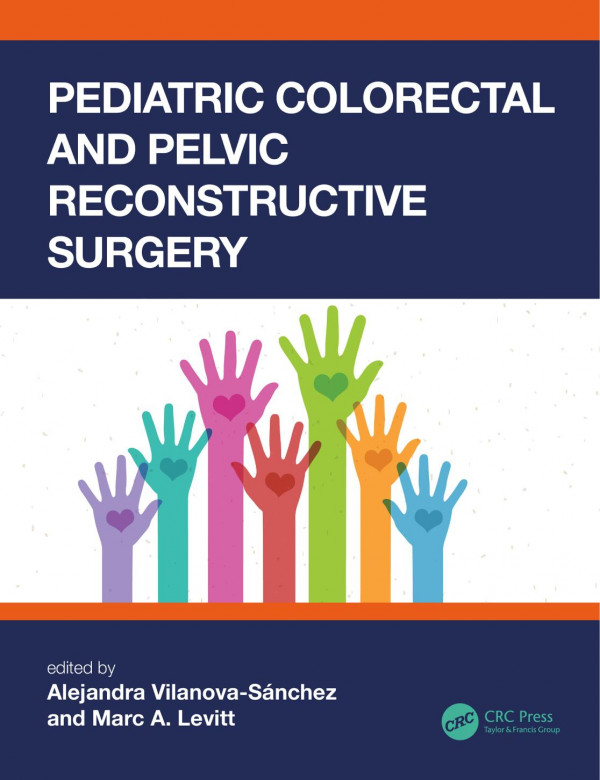
Product details:
ISBN-10 : 0429639906
ISBN-13 : 9780429639906
Author: Alejandra Vilanova-Sanchez, Marc A. Levitt
This book provides comprehensive coverage of the anatomical and physiological aspects of complex colorectal and pelvic malformations. Also described are the surgical protocols for this specialized field within pediatric surgery. The benefits of high-level collaboration between surgical services when treating these anomalies are explained, as are treatment algorithms and care of complications. Includes evaluation and management of the newborn Describes surgical interventions of the newborn, and when a primary repair versus a staged approach is required Explains the value of laparoscopy and deciding in which cases to use it Looks at the importance of a transition program to adulthood Pediatric surgeons worldwide and the teams in which they work will benefit from this well illustrated and comprehensive work.
Pediatric Colorectal and Pelvic Reconstructive Surgery 1st Table of contents:
1. Pediatric colorectal and reconstructive surgery: Fundamentals of surgical preparation
1.1 Bowel preparation in pediatric colorectal surgery
1.2 Rectal enemas and rectal irrigations
1.3 OR setup for colorectal surgery: How to improve exposure?
References
2. Basic anatomic principles of pediatric colorectal and reconstructive surgery
2.1 Normal anatomy of the perineum in a newborn, toddler, and adolescent
2.2 Technical essentials of pelvic surgery
2.3 Colonic vascularization and its importance in pediatric colorectal surgery
2.4 Sensation of the anal canal
2.5 Ostomy creation
References
3. Anorectal malformations: The newborn period
3.1 VACTERL association (and syndromes) screening
3.2 Key anatomical findings in the newborn to identify the different types of anorectal malformations
3.3 How to talk with the family—Potential for bowel control: Type of malformation, sacral ratio, and spine status (the ARM continence index)
3.4 How to proceed when there are major co-morbidities—What should the surgeon do first?
3.5 Who needs a colostomy?
References
4. Anorectal malformation: Definitive repair and surgical protocol
4.1 Preoperative considerations
4.2 Intraoperative considerations
4.3 Follow-up Long term (anal dilations)
Selected references
5. Cloaca: Important steps and decision-making for pre- and post-definitive repair
5.1 Introduction
5.2 Case study
5.3 Postoperative care and follow-up
References
6. Cloaca: Definitive repair and surgical protocol
6.1 Introduction
6.2 Case study
6.3 Conclusion
References
7. Long-term urologic and gynecologic follow-up in anorectal anomalies: The keys to success
7.1 Urologic long-term follow-up
7.2 Gynecologic long-term follow-up
References
Further reading
8. A patient with an anorectal malformation who has been previously repaired and who is “not doing well”
8.1 Case study 1
8.2 Case study 2
8.3 Case study 3
8.4 Case study 4
8.5 Case study 5
8.6 Case study 6
References
9. Neonatal diagnosis of Hirschsprung disease
9.1 Case study
Suggested references
10. Hirschsprung disease: Definitive repair with transanal pull-through
10.1 Case study 1
10.2 Case study 2
10.3 Case study 3
10.4 Case study 4
10.5 Transanal pull-through
10.6 Transanal pull-through in a child with a preliminary ostomy
Suggested references
11. Total colonic Hirschsprung disease: Ileo-Duhamel
11.1 When to suspect TCA
11.2 Approach to a child struggling with washouts
11.3 Once the stoma is done, what is your next step in management?
11.4 The ileal Duhamel
11.5 What to do if there is an unexpected on table finding
References
12. Total colonic Hirschsprung: Pre- and postoperative care
12.1 Ileostomy, growth, and high output: What do pediatric surgeons need to know about high output ostomy management?
12.2 TCHD: Hypermotility and diaper dermatitis management before and after the definitive pull-through
12.3 Protocol for TCHD
13. The post pull-through Hirschsprung patient who is not doing well with obstructive or incontinence symptoms
13.1 Case study 1
13.2 Case study 2
13.3 Case study 3
13.4 Conclusions
Further reading
14. Long-term outcomes of anorectal malformations and Hirschsprung disease
14.1 Case 1: Hirschsprung disease
14.2 Case 2: Hirschsprung disease
14.3 Case 3: Anorectal malformation in males
14.4 Case 4: Anorectal malformation in females
14.5 Case 5: Anorectal malformation in female with a cloaca
14.6 Conclusions
References
15. Antegrade access as an adjunct to bowel management: Appendicostomy and neoappendicostomy
15.1 Case study 1
15.2 Case study 2
15.3 Case study 3
15.4 Case study 4
15.5 Technical aspects for the Malone appendicostomy
References
16. Severe functional constipation: Surgery and gastroenterologic collaboration
16.1 Introduction
16.2 Case study 1
16.3 Case study 2
16.4 Case study 3
16.5 Case study 4
References
17. Colonic resection in children with colonic dysmotility
17.1 Case study 1
17.2 Case study 2
17.3 Case study 3
17.4 Case study 4
17.5 Case study 5
Further reading
18. Importance of collaboration in pelvic reconstruction: How to avoid complications and extra interventions
18.1 Case study 1
18.2 Case study 2
18.3 Case study 3
18.4 Case study 4
18.5 Overall teaching points
References
19. Bowel management
19.1 Bowel management program
19.2 Case study 1
19.3 Case study 2
19.4 Case study 3
19.5 Case study 4
Further reading
20. Evaluation of continence in children with Hirschsprung disease and anorectal malformation
20.1 Case study 1
20.2 Case study 2
20.3 Case study 3
20.4 Summary (Cases 1–3)
20.5 Case study 4
20.6 Case study 5
Further reading
21. Minor anal pathology: Rectal prolapse, perianal abscesses, hemorrhoids, anal fissures, and pilonidal disease
21.1 Case study 1
21.2 Case study 2
21.3 Case study 3
21.4 Case study 4
21.5 Case study 5
21.6 Case study 6
21.7 Case study 7
21.8 Case study 8
References
22. Familial adenomatous polyposis
22.1 Case study 1
22.2 Case study 2
22.3 Case study 3
References
23. Ulcerative colitis and indeterminate colitis in children
23.1 Case study 1
23.2 Case study 2
23.3 Case study 3
References
24. Crohn’s disease in children
24.1 Case study 1
24.2 Case study 2
24.3 Case study 3
References
25. Pediatric colorectal surgery in low- and middle-income settings: Adaptation to the resources available
25.1 Case study 1
25.2 Case study 2
25.3 Case study 3
25.4 Case study 4
25.5 Application of general colorectal surgery principles to challenging cases prevalent in the developing world
25.6 Technical aspects: Performing neonatal colostomy under local anesthesia
25.7 Technical aspects: Periumbilical/umbilical approach as alternative to laparoscopic colonic biopsy and proximal colon mobilization for long-segment Hirschsprung disease
25.8 Technical aspects: Ano(recto)plasty
25.9 Perioperative care considerations
25.10 Equipment
References
26. Transitional care in colorectal and pelvic reconstruction surgery
26.1 Case study 1
26.2 Case study 2
26.3 Case study 3
References
27. Operative reports of the most common procedures in pediatric colorectal surgery: Key steps
27.1 Laparoscopic-assisted Swenson pull-through for Hirschsprung disease
27.2 Open sigmoid resection for segmental colonic dysmotility
27.3 Laparoscopic sigmoid resection plus Malone
27.4 Laparoscopic Malone
27.5 Neoappendicostomy
27.6 Laparoscopic-assisted posterior sagittal anorectoplasty for anorectal malformation
27.7 Heineke–Mikulicz plasty for skin level stricture after anoplasty
27.8 PSARP recto-vestibular fistula (female)
27.9 PSARP perineal fistula (male)
27.10 Cloaca total urogenital mobilization
27.11 Cloaca PSARVUP: Posterior sagittal anorectovaginourethroplasty
27.12 Transanal Swenson pull-through for Hirschsprung disease
27.13 Transanal Soave pull-through for Hirschsprung disease
27.14 Open Swenson for TCHD
27.15 Duhamel pull-through for Hirschsprung disease
28. Tracking operative results and outcomes
28.1 Case study 1
28.2 Case study 2
28.3 Case study 3
Further reading
29. Patient education
29.1 Introduction
29.2 Anorectal malformation
29.3 Hirschsprung disease
29.4 Bowel management
29.5 Surgical antegrade options
29.6 Urology
References
30. Resources for families and the burden of therapy
30.1 Discussion
30.2 Summary
30.3 Case study 1
31. Creating a collaborative program
31.1 Case 1: Starting a program
31.2 Case 2: Building the team
31.3 Case 3: Building expertise
31.4 Case 4: Advancing the program (iterative improvement)
31.5 Case 5: Data
31.6 Case 6: Infrastructure
31.7 Components of a multidisciplinary pediatric colorectal and pelvic reconstruction program
31.8 Steps for making the business case to the hospital
31.9 Components of a typical week in a current program
People also search for Pediatric Colorectal and Pelvic Reconstructive Surgery 1st:
pediatric colorectal surgeon near me
colorectal surgery after childbirth
colorectal surgery topics
how long does pelvic reconstructive surgery take
what is reconstructive pelvic surgery
Tags: Pediatric Colorectal, Pelvic Reconstructive, Surgery, Alejandra Vilanova Sanchez, Marc Levitt
You may also like…
Medicine - Surgery
Medicine - Pediatrics
Case studies in pediatric colorectal and pelvic surgery 1st Edition Victoria A. Lane
Medicine - Surgery




